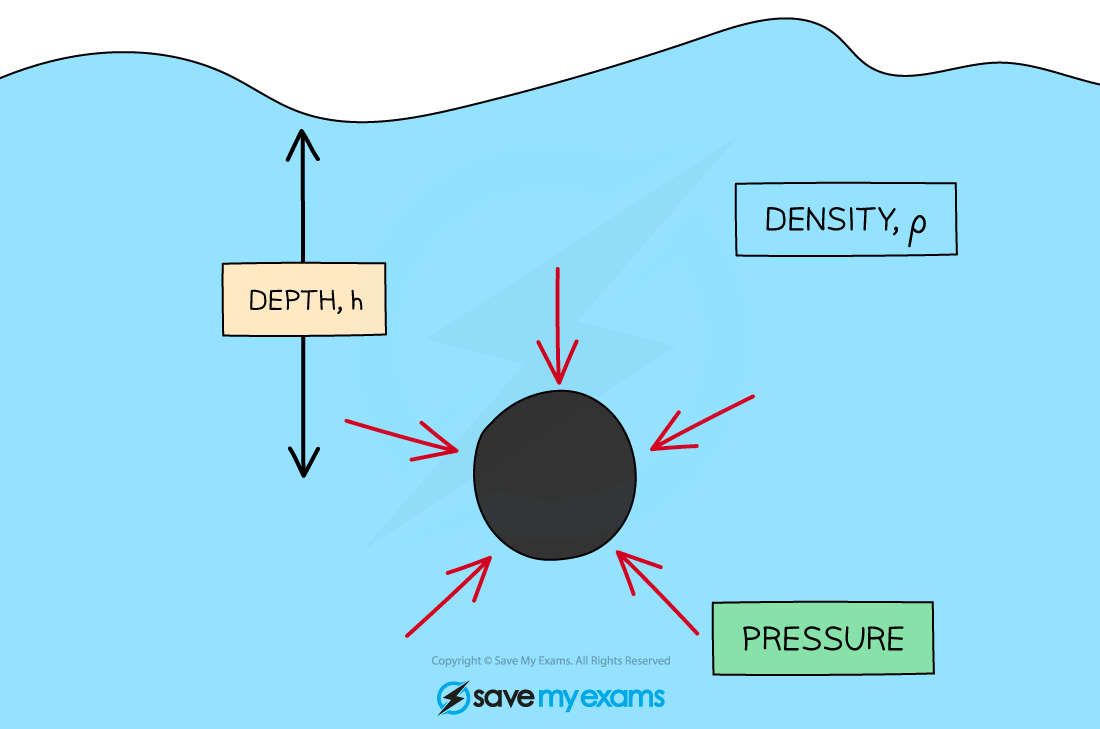Calculating Pressure in a Liquid (Edexcel GCSE Physics) : Revision Note
Calculating Pressure in a Liquid
Higher Tier Only
The pressure due to a column of liquid can be calculated using the equation
p = h × ρ × g
Where:
p = pressure in pascals (Pa)
h = height of the column in metres (m)
ρ = density of the liquid in kilograms per metre cubed (kg/m3)
g = gravitational field strength on Earth in newtons per kilogram (N/kg)
The force from the pressure is exerted evenly across the whole surface of an object in a liquid, and in all directions

The force from the pressure of objects in a liquid is exerted evenly across its whole surface
The pressure is more accurately the difference in pressure at different depths h in a liquid, since the pressure changes with the depth
Worked Example
Calculate the depth of water in a swimming pool where a pressure of 20 kPa is exerted.
The density of water is 1000 kg/m3 and the gravitational field strength on Earth is 9.8 N/kg.
Answer:

Examiner Tips and Tricks
This pressure equation will be given on your formula sheet, however, make sure you are comfortable with rearranging it for the variable required in the question!

You've read 0 of your 5 free revision notes this week
Sign up now. It’s free!
Did this page help you?
